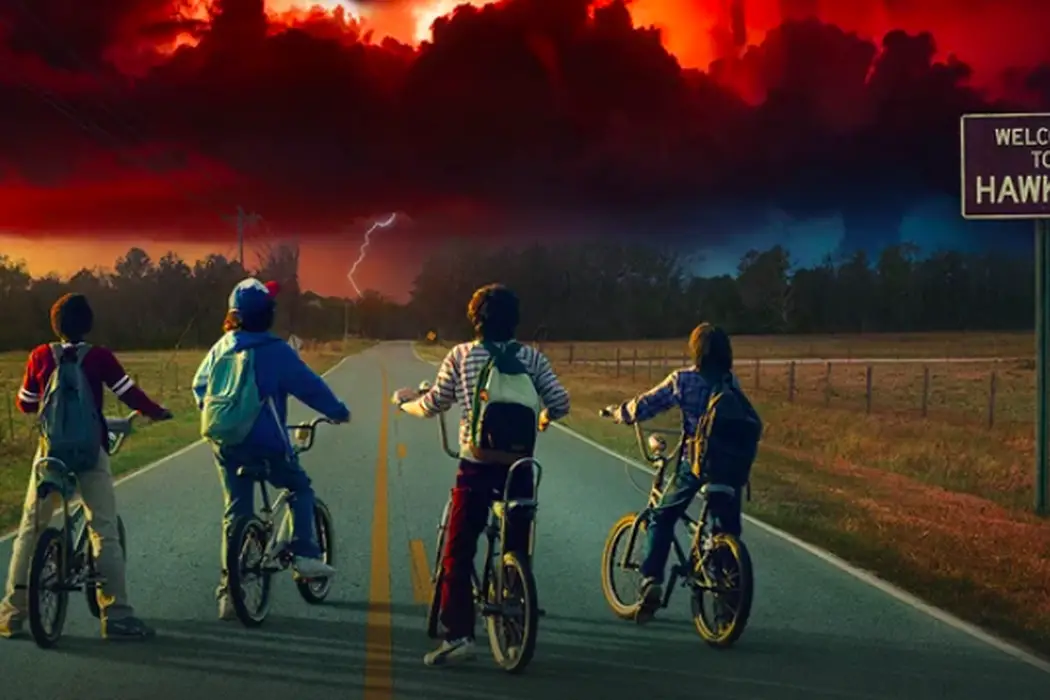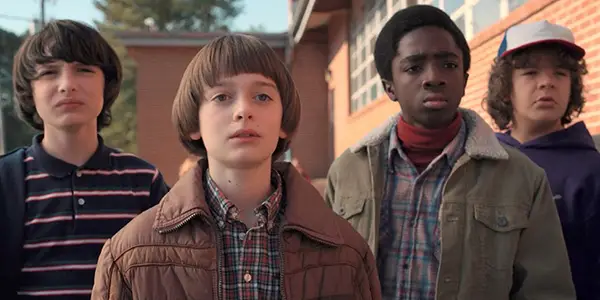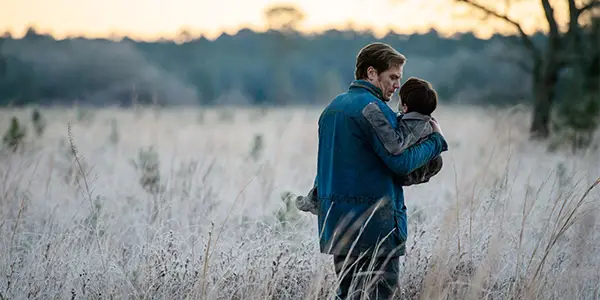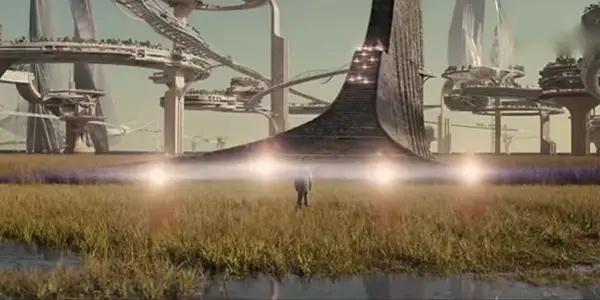MIDNIGHT SPECIAL, STRANGER THINGS & The Perils Of Nostalgia

Brian Brems is an Associate Professor of English and Film…
When Netflix’s series Stranger Things premiered quietly in the summer of 2016, it immediately became a nostalgic sensation. Set in the 1980s, and wearing its horror and science fiction influences proudly on its sleeve, the series spawned memes, t-shirts, and a passionate fan base of viewers. Some of them are close in age to the series’ core characters, a group of four middle-school boys – members of the AV Club, players of Dungeons & Dragons, who carry the torch for nerd culture decades before the nerds turned pro.
But many of the series’ loudest cheerleaders are the adults who themselves spent the 1980s hanging out in pop-culture basement caves, surrounded by Star Wars toys and posters for E.T. For a significant portion of the show’s viewers, Stranger Things was a time machine that transported them back to the days of mean older sisters, sleepovers, and consequence free junk food.
The reaction to Jeff Nichols’s Midnight Special, released in theatres just a few months before Stranger Things hit Netflix, was much less enthusiastic. Nichols’s film tells the story of a young boy named Alton Meyer (Jaeden Lieberher) endowed with a mysterious gift. His eyes glow, he communicates with satellites, and his power transfixes all who witness it. The boy’s father Roy (Michael Shannon) and his childhood friend Lucas (Joel Edgerton) have rescued Alton from the clutches of a shadowy religious organization and are traveling across the American South from Texas to the Florida panhandle to help the boy realize an uncertain destiny.
Along the way, the trio picks up Roy’s estranged wife Sarah (Kirsten Dunst) and must evade capture by the cult’s goons and U.S. law enforcement agencies. The film draws heavily on comic book mythology, repeatedly referencing Superman, and owes much to the same fertile science fiction ground that Stranger Things tills. Midnight Special hops and skips its way through John Carpenter’s Starman, E.T., and Firestarter.
Stranger Things and Midnight Special share so much of the same DNA, and hit at a moment that obviously was, and is now, perfectly receptive to stories that draw upon the popular culture of the 1980s. And yet, their fates have diverged widely. Stranger Things is a phenomenon, and Midnight Special is a footnote.
“I’d Buy That For A Dollar!”: Nostalgia As Currency
Walk into a department store today, and cruise by the adult men’s section. It doesn’t take too long to find a tiered table piled high with folded, pre-distressed t-shirts of Thor, Iron Man, and the Incredible Hulk. Or, if you’re not so into comic book heroes, there are faux-vintage heathered Star Wars shirts, or a Goonies-pirate flag stretched over black. The past, like the kid gang of Richard Donner’s film, never dies.
It’s not just the men’s section, either. Each store sells a similar line of shirts for women – maybe a little shorter and cut differently. The pull of what came before transcends gender. There is something about the thrill of reaching for a shirt emblazoned with a graphic that evokes a memory. When you pull that thing over your head and see the logo reflected back at you in a mirror, it doesn’t make you think you’re Captain America, but it gives you permission to pretend to be if you want. You travel back in time to a time when it was okay to imagine. For $14.95, you can arrest your own development.
That’s the button that Stranger Things pushes for a large portion of its audience. It manufactures a dopamine hit of recognition, for instance, at hearing that David Harbour plays a character named Jim Hopper, which just has to be a reference to the slaughtered and skinned off-screen soldier from Predator, whose death foreshadows just how big and bad Arnold Schwarzenegger is going to have to be to survive the movie. The obscurity of that reference passes by an uninitiated viewer, but grants special membership to the one in the know.

So too does a moment early in the show’s second season, when a psychiatrist, Dr. Owens (Paul Reiser) watches a medical procedure on a monitor. He watches a moment, then reaches out, and switches off the monitor. It’s basic narrative information that indicates something about this character – at this point, it’s uncertain whether this character is trustworthy. He works for the same mysterious outfit of unethical government scientists who opened an interdimensional rift that led to the chaos of the first season. But the image, relatively innocuous on its face, communicates another meaning to those familiar with its genre influences.
Reiser will be instantly recognizable to those viewers from his role as the corporate weasel Carter Burke in James Cameron’s Aliens. In Aliens, Burke reveals his true colors when he betrays the heroine Ellen Ripley (Sigourney Weaver), setting her up as a host for an alien egg. He watches the trap he’s set for her through a monitor from another room. He stares a moment, and then reaches out and switches it off. One wonders if it was odd for Reiser as an actor to stand in the same place, in an identically framed shot, and perform the exactly precise action some thirty years apart, as if he were caught in a perpetual state of déjà vu.
The flash of recognition in this moment is not without dramatic merit. The shot and Owens’s actions within it recall Burke for the viewer who gets the reference, and invite comparison between the two characters, especially when played by the same actor. That pays dividends later in the season, when Owens turns out to be much more scrupulous than Burke. In this particular case, Stranger Things takes expectations and slightly challenges them.
On the whole, however, Stranger Things has very little interest in subverting the genre conventions of the science fiction and horror films of the 1980s. It has too much reverence for them to levy meaningful critique, and is ultimately unwilling to use the genre to say anything new with the form. Its adults are well-meaning, but can’t really understand the world of the kids. The boys are precocious and mischievous, but their youthful innocence makes them more deeply moral.
There is the appearance of danger, but the kids will come to no real harm. The show’s nostalgic impulse overrides all other imperatives. Its prime directive is to inspire unchallenged validation of the experiences of youth. When you watch it, you are back in the basement, and all of your toys are spread out on the floor. You know every nick in their paint, every tender elbow joint, every sticky spaceship door hinge. You know. You remember. You smile.
A Future We Will Not See
If Stranger Things is trapped forever in a comfortable, known history, then Midnight Special uses the genre tropes of the past to tell a story about the future. Throughout the film, Nichols continually deviates from the established conventions of the science fiction cinema of the 1980s. When the genre says he should zig, he zags. He repeatedly denies narrative release, often eliminating crucial passages of the film that have historically been the lynchpins of the science fiction film.
The genre is filled with iconic moments. In one, an alien visitor uses his powers of healing to resurrect a hunter’s prize deer, which jumps off the hood of a car and scampers back into the woods with a new life to live. In another, kids on bikes race through the streets, pursued by faceless government stooges. Then, they suddenly launch into the sky, their bikes floating off the ground as if by magic. One flies so high above the trees, he passes in front of the moon, casting an instantly recognizable silhouette, wondrous in its visual poetry.

Midnight Special resists these moments. It has no interest in restaging either of them – what would be the point? The film does not exist merely to remind its viewers of other, perhaps superior films, which at the very least have a thirty-year incumbency advantage with audiences. Instead, it operationalizes the audience’s understanding of the genre, turning it into a kind of shorthand that allows Nichols to make choices about what not to show. Late in the film, Alton is captured by the government. They interrogate him, demanding to know how he gained access to NSA satellites and how he knows their national security secrets. He insists he will only speak to Dr. Paul Sevier (Adam Driver), in whom he sees something of a kindred spirit. Alton convinces Sevier to break him out of the government facility and return him to his parents.
The expected tension-filled escape sequence, where Sevier must outwit guards and law enforcement officials, sweat gathering on his brow while Alton hides on the underside of a rolling cart, never happens. Instead, Nichols cuts to an empty parking lot, where Roy, Lucas, and Sarah stand, unsure of what to do next to get Alton back. A pay phone rings, and Sevier is on the other end. Nichols cuts to Sevier and Alton, walking to Sevier’s car outside the facility. They’ve made it out. Nichols did not show the escape. You’ve seen it before. You’ve been there. You’ve done that.
While Nichols takes more opportunities to subvert genre expectations, he elevates the material in order to make a more personal statement. As the rescuers attempt to get Alton to Florida, his parents begin to accept that they may be about to say goodbye to their son forever. Throughout the film, Roy’s actions are selfless and driven by his willingness to sacrifice his own life, and eventually his own freedom, for Alton. Sarah is the same. Even Lucas, estranged from Roy for years, only drawn back into his life to help him save Alton, is committed to getting the boy to his destination. The science fiction set pieces, the special effects, and the grandiose musical score all get left behind. A story about parents who will do anything for their son remains.

Nichols saves his big move for the film’s climax. Roy and Lucas drop Sarah and Alton on the side of the road, an abbreviated and interrupted goodbye between father and son. Sarah leads Alton through the woods, and Roy and Lucas drive on to the army roadblock ahead to serve as a decoy. Throughout the film, the source of Alton’s power has remained largely mysterious. It is revealed in these final moments: an inter-dimensional, futuristic city, built high above Earth’s surface, exists on top of our everyday world. The city appears in a clearing in the Florida swamps, an enormous staircase stretching into the heavens. In the distance, people gather at their base, and beckon to Alton. He hugs his mother, and Sarah watches as he walks across the clearing, and is welcomed by the group of benevolent beings.
Nichols does not linger on the details of the city. He does not show it in closeup. He does not explain it in narrative. It is a vision of another world, one that Alton is compelled to join, perhaps a vision of the future. Sarah trembles before the beauty of what she sees, and tears stream down her cheeks. She knows that Alton is bound for the greatness and majesty of the clearly superior world she can only glimpse, but she also knows that she cannot go there. She will never know what he will achieve. She can only bring him as far as she can, and then let go.
In a world threatened by the uncertain future that a changing climate will bring, Midnight Special speaks to the value of hope. Alton’s new world is on Earth, but also above it. It exists simultaneously with our own familiar world, yet represents a more peaceful, advanced future. The film’s climactic transcendence offers Sarah a vision of what her son will help build, even if she does not live to see it come to fruition.
Unlike Starman, E.T., or Stranger Things’ Eleven, Alton is no Christ figure. He is a citizen of a future world marked by collaboration and innovation. He alone can’t fix it. The welcoming arms of his compatriots gathered at the base of the stairs suggest he won’t have to.
To Be Remembered
The past is known. Its anxieties are diminished. Its challenges are overcome. Its foes are vanquished. The problems of adulthood are both so complex and so removed from childhood that it is comforting to travel back to a time when things must have been simpler, and when all problems have disappeared down the memory hole.
The future is slippery. Its outcomes are uncertain. Maybe the sun won’t come out tomorrow. Maybe the end is closer than we think.
The finest examples of science fiction, especially in this moment, engage with both the past and the future. They play upon our awareness of the history of genre, and our memories of what those stories activate in us, and repurpose them for a modern world. They seek not merely to recreate yesterday’s feelings, but process tomorrow’s.
We remember because we are afraid to be forgotten. We are afraid to let go. But we must. We have to surrender to a world that does not include us, while knowing that such a world could not exist without our choices, for good and ill. Those who come after us will go where they must, but because we have pointed the way. Stranger Things is where we’ve been. Midnight Special is where we have to go.
In cinematic art, when does the nostalgic impulse imperil forward progress?
Does content like this matter to you?
Become a Member and support film journalism. Unlock access to all of Film Inquiry`s great articles. Join a community of like-minded readers who are passionate about cinema - get access to our private members Network, give back to independent filmmakers, and more.
Brian Brems is an Associate Professor of English and Film at the College of DuPage, a large two-year institution located in the western Chicago suburbs. He has a Master's Degree from Northern Illinois University in English with a Film & Literature concentration. He has a wife, Genna, and two dogs, Bowie and Iggy.













